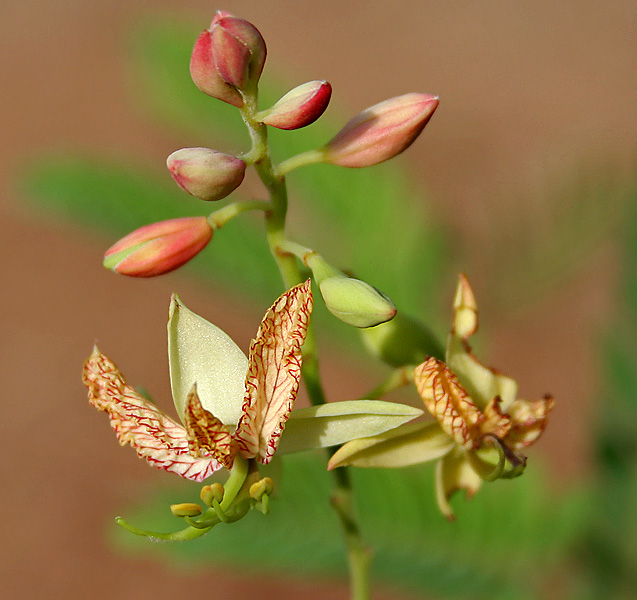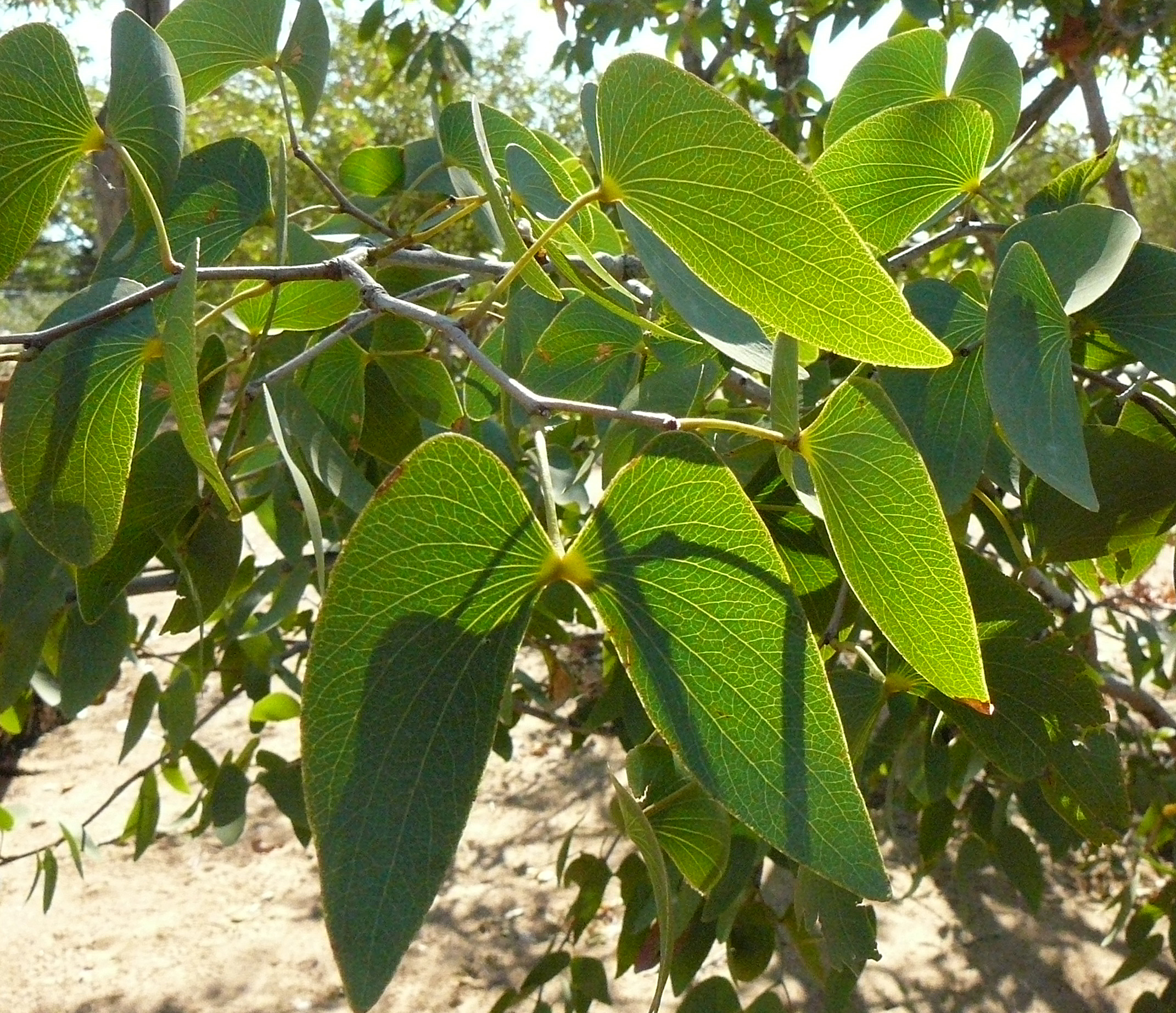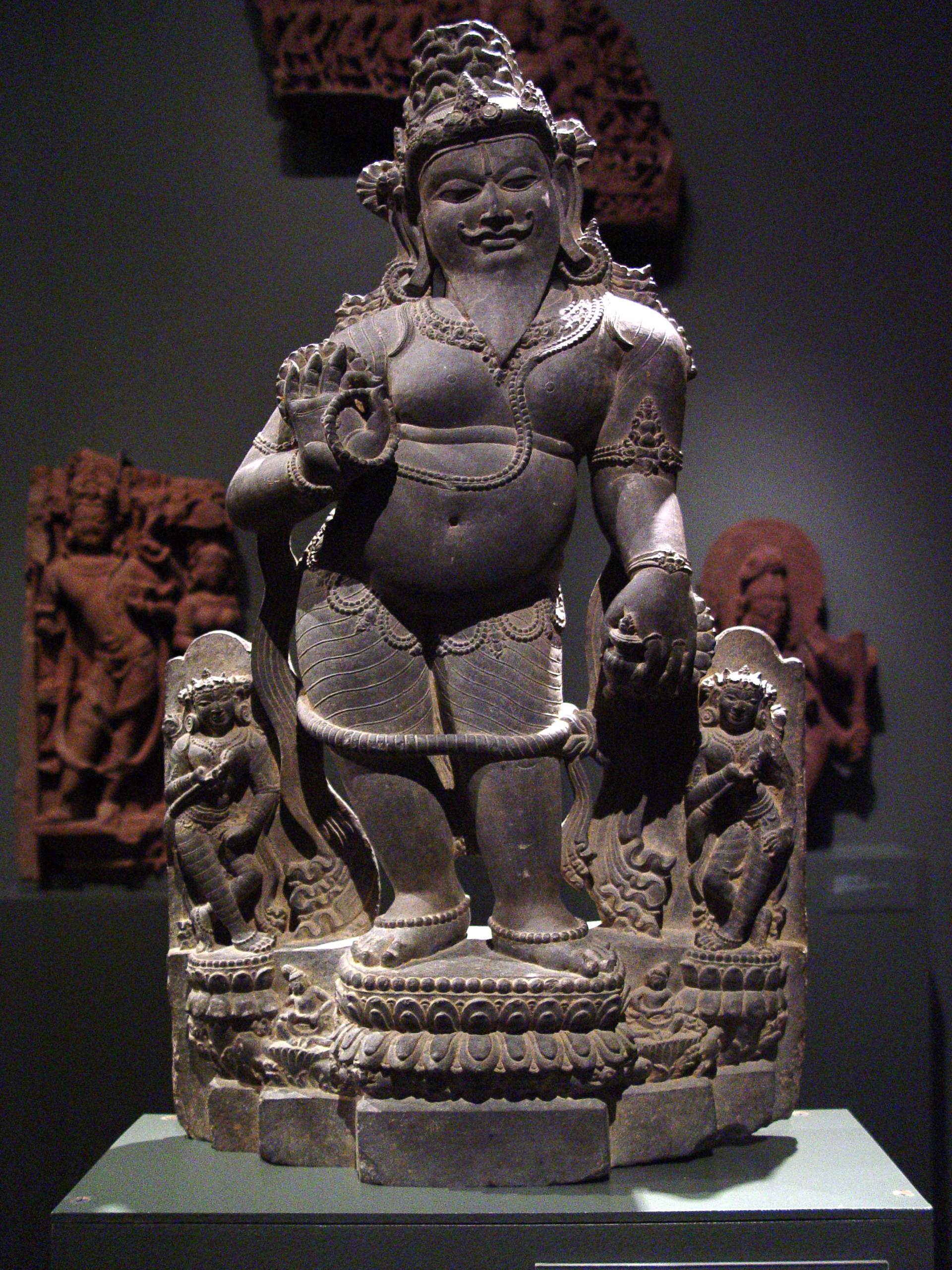|
Hardwickia
''Hardwickia'' is a monotypic genus of flowering plant in the subfamily Detarioideae of the legume family, Fabaceae. The only species is the anjan, ''Hardwickia binata'', a tree which is native to India and Bangladesh, and which grows to height of 25-30 meters. This plant genus was named after Thomas Hardwicke by William Roxburgh. Description ''Hardwickia binata'' is a moderate-sized to large tree with drooping branches. The bark of the tree is greyish-brown in colour, rough with deep cracks and it darkens with age. The compound leaves have only two leaflets which are joined at the base. The tiny, white/greenish-yellow coloured flowers are inconspicuous and are easily overlooked. The fruits are short, flat pods about 6 cm long with a single seed attached at the end. The timber obtained from the tree is durable and termite resistant, and is the hardest and heaviest among timbers from the trees found in India. The leaves are shed in April and the new leaves emerge in early May ... [...More Info...] [...Related Items...] OR: [Wikipedia] [Google] [Baidu] |
Detarioideae
The subfamily Detarioideae is one of the subdivisions of the plant family Fabaceae (legumes). This subfamily includes many tropical trees, some of which are used for timber or have ecological importance. The subfamily consists of 84 genera, most of which are native to Africa and Asia. Pride of Burma (''Amherstia nobilis'') and tamarind (''Tamarindus indica'') are two of the most notable species in Detarioideae. It has the following clade-based definition: The most inclusive crown clade containing '' Goniorrhachis marginata'' Taub. and '' Aphanocalyx cynometroides'' Oliv., but not '' Cercis canadensis'' L., '' Duparquetia orchidacea'' Baill., or '' Bobgunnia fistuloides'' (Harms) J. H. Kirkbr. & Wiersema. Taxonomy Detarioideae comprises the following tribes and genera: Schotieae * '' Schotia'' Jacq. Barnebydendreae * '' Barnebydendron'' J.H.Kirkbr. * '' Goniorrhachis'' Taub. Detarieae * '' Augouardia'' Pellegr. * '' Baikiaea'' Benth. * '' Brandzeia'' Baill. * '' Colophosper ... [...More Info...] [...Related Items...] OR: [Wikipedia] [Google] [Baidu] |
Colophospermum Mopane
''Colophospermum mopane'', commonly called mopane, mopani, butterfly tree, turpentine tree, or balsam tree, is a tree in the legume family (Fabaceae), that grows in hot, dry, low-lying areas, in elevation, in parts of Southern Africa. The tree only occurs in Africa and is the only species in genus ''Colophospermum''. Its distinctive butterfly-shaped (bifoliate) leaf and thin kidney-shaped/nearly semi-circular seed pod make it easy to identify. Though hard and dense and difficult to work with, it is valued timber in all sorts of construction due to its termite tolerance. Together with camel thorn and leadwood, one of the three regionally important firewood trees, due to the enduring heat, and these woods are also some of the preferred use culinarily for braai. Range and habitat The mopane is found on low-lying ground from (Mozambique) to (Zimbabwe). Mopane ecoregions Native to Southern Africa, its habitat is divided crudely into two regions: the "Angola region", i.e., ... [...More Info...] [...Related Items...] OR: [Wikipedia] [Google] [Baidu] |
Thomas Hardwicke
Major-General Thomas Hardwicke (1756 – 3 March 1835) was an English soldier and natural history, naturalist who was in India from 1777 to 1823. He collected numerous specimens of natural history and had them painted by Indian artists. From these paintings many new species were described. Several of these species are named after him. On returning to England he collaborated with the zoologist John Edward Gray to publish ''Illustrations of Indian Zoology'' (1830–1835). Biography Hardwicke joined the British East India Company army with the Bengal Artillery as a Lieutenant Fireworker on 3 November 1778. He was posted in southern India from 1781 to 1785 serving under Colonel Pearce and Sir Eyre Coote (East India Company officer), Eyre Coote. He was in the field during the campaign against Tipu Sultan in 1790–1792. He saw action in the Relief of Vellore (10 January 1782), the Siege of Cuddalore (June 1783) and in the Rohilla Campaign (26 October 1794). He was wounded at Satyaman ... [...More Info...] [...Related Items...] OR: [Wikipedia] [Google] [Baidu] |
William Roxburgh
William Roxburgh FRSE FRCPE Linnean Society of London, FLS (3/29 June 1751 – 18 February 1815) was a Scottish people, Scottish surgeon and botanist who worked extensively in India, describing species and working on economic botany. He is known as the founding father of Indian botany. He published numerous works on Indian botany, illustrated by careful drawings made by Indian artists and accompanied by taxonomic descriptions of many plant species. Apart from the numerous species that he named, many species were named in his honour by his collaborators. He was the first to document the existence of the Ganges river dolphin. Early life He was born on 3 June 1751 on the Underwood estate near Craigie, South Ayrshire, Craigie in Ayrshire and christened on 29 June 1751 at the nearby church at Symington, South Ayrshire, Symington. His father may have worked in the Underwood estate or he may have been the illegitimate son of a well-connected family. His early education was at Underwood ... [...More Info...] [...Related Items...] OR: [Wikipedia] [Google] [Baidu] |
Adsorption
Adsorption is the adhesion of atoms, ions or molecules from a gas, liquid or dissolved solid to a surface. This process creates a film of the ''adsorbate'' on the surface of the ''adsorbent''. This process differs from absorption, in which a fluid (the ''absorbate'') is dissolved by or permeates a liquid or solid (the ''absorbent''). While adsorption does often precede absorption, which involves the transfer of the absorbate into the volume of the absorbent material, alternatively, adsorption is distinctly a surface phenomenon, wherein the adsorbate does not penetrate through the material surface and into the bulk of the adsorbent. The term '' sorption'' encompasses both adsorption and absorption, and ''desorption'' is the reverse of sorption. Like surface tension, adsorption is a consequence of surface energy. In a bulk material, all the bonding requirements (be they ionic, covalent or metallic) of the constituent atoms of the material are fulfilled by other atoms in ... [...More Info...] [...Related Items...] OR: [Wikipedia] [Google] [Baidu] |
Flora Of Bangladesh
Flora (: floras or florae) is all the plant life present in a particular region or time, generally the naturally occurring ( indigenous) native plants. The corresponding term for animals is ''fauna'', and for fungi, it is ''funga''. Sometimes bacteria and fungi are also referred to as flora as in the terms ''gut flora'' or ''skin flora'' for purposes of specificity. Etymology The word "flora" comes from the Latin name of Flora, the goddess of plants, flowers, and fertility in Roman mythology. The technical term "flora" is then derived from a metonymy of this goddess at the end of the sixteenth century. It was first used in poetry to denote the natural vegetation of an area, but soon also assumed the meaning of a work cataloguing such vegetation. Moreover, "Flora" was used to refer to the flowers of an artificial garden in the seventeenth century. The distinction between vegetation (the general appearance of a community) and flora (the taxonomic composition of a community) was ... [...More Info...] [...Related Items...] OR: [Wikipedia] [Google] [Baidu] |
Flora Of India (region)
The flora of India is one of the richest in the world due to the wide range of climate, topology and habitat in the country. There are estimated to be over 18,000 species of flowering plants in India, which constitute some 6-7 percent of the total plant species in the world. India is home to more than 50,000 species of plants, including a variety of endemics. The use of plants as a source of medicines has been an integral part of life in India from the earliest times. There are more than 3000 Indian plant species officially documented as possessing into eight main floristic regions : Western Himalayas, Eastern Himalayas, Assam, Indus plain, Ganges plain, the Deccan, Malabar and the Andaman Islands. Forests and wildlife resources In 1992, 743,534 km2 of land in the country was forested of which 92 percent was government land. This amounts to 22.7 percent land coverage, compared to the recommended 33 percent of the National Forest Policy Resolution 1952. The majority ... [...More Info...] [...Related Items...] OR: [Wikipedia] [Google] [Baidu] |
Monotypic Fabaceae Genera
In biology, a monotypic taxon is a taxonomic group (taxon) that contains only one immediately subordinate taxon. A monotypic species is one that does not include subspecies or smaller, infraspecific taxa. In the case of genera, the term "unispecific" or "monospecific" is sometimes preferred. In botanical nomenclature, a monotypic genus is a genus in the special case where a genus and a single species are simultaneously described. Theoretical implications Monotypic taxa present several important theoretical challenges in biological classification. One key issue is known as "Gregg's Paradox": if a single species is the only member of multiple hierarchical levels (for example, being the only species in its genus, which is the only genus in its family), then each level needs a distinct definition to maintain logical structure. Otherwise, the different taxonomic ranks become effectively identical, which creates problems for organizing biological diversity in a hierarchical system. ... [...More Info...] [...Related Items...] OR: [Wikipedia] [Google] [Baidu] |
Amherstia Nobilis
''Amherstia nobilis'' ( ; the Pride of Burma) is a tropical tree growing to about in height with large, showy flowers. It is the only member of the genus ''Amherstia''. It is widely cultivated for ornament in the humid tropics, but is extinct in the wild, only being known from a single wild specimen which was recorded in 1865. It is thus potentially endemic in Burma (Myanmar), hence the common name, though Plants of the World Online also cites it as native in adjoining Thailand. The scientific name commemorates Lady Amherst, (as does Lady Amherst's pheasant) and also her daughter Sarah.Wallich, Nathaniel. ''Plantae Asiaticae Rariores'' 11 1830 829 Another common name, orchid tree, is also used for members of the genus ''Bauhinia''. Description The extravagant flowers are seen hanging from the metre-long pendent inflorescence, or flower stalk, which is a bright crimson red at the end. There are 5 petals although 2 of these are minute and the rest are of unequal size. These pet ... [...More Info...] [...Related Items...] OR: [Wikipedia] [Google] [Baidu] |
Sangam Literature
The Sangam literature (Tamil language, Tamil: சங்க இலக்கியம், ''caṅka ilakkiyam''), historically known as 'the poetry of the noble ones' (Tamil language, Tamil: சான்றோர் செய்யுள், ''Cāṉṟōr ceyyuḷ''), connotes the early classical Tamil literature and is the earliest known literature of South India. The Tamil tradition links it to Legendary Tamil Sangams, legendary literary gatherings around Madurai in the ancient Pandya dynasty, Pandya kingdom. It is generally accepted by most scholars that the historical Sangam literature era, also known as the Sangam period, spanned from 100 BCE to 250 CE, on the basis of linguistic, epigraphic, archaeological, numismatic and historical data; though some scholars give a broader range of 300 BCE to 300 CE. The Eighteen Greater Texts (Patiṉeṇmēlkaṇakku), along with the Tamil grammar work Tolkāppiyam, Tolkappiyam, are collectively considered as Sangam literature. These tex ... [...More Info...] [...Related Items...] OR: [Wikipedia] [Google] [Baidu] |
Someshvara III
Someshvara III (; ) was a Western Chalukya king (also known as the Kalyani Chalukyas), the son and successor of Vikramaditya VI. He ascended the throne of the Western Chalukya Kingdom in 1126 CE, or 1127 CE. Someshvara III, the third king in this dynasty named after the Hindu god Shiva made numerous land grants to cause of Shaivism and its monastic scholarship. These monasteries in the Indian peninsula became centers of the study of the Vedas and Hindu philosophies such as the Nyaya school. Someshvara III died in 1138 CE, and succeeded by his son Jagadekamalla. Someshvara was a noted historian, scholar, and poet.A Textbook of Historiography, 500 B.C. to A.D. 2000 by E. Sreedharan, p.328-329, Orient Blackswan, (2004) He authored the Sanskrit encyclopedic text ''Manasollasa'' touching upon such topics as polity, governance, astronomy, astrology, rhetoric, medicine, food, architecture, painting, poetry, dance and music – making his work a valuable modern source of socio-cul ... [...More Info...] [...Related Items...] OR: [Wikipedia] [Google] [Baidu] |
Manasollasa
The ' also known as ''Abhilashitartha Chintamani'', is an early 12th-century Sanskrit text composed by the Kalyani Chalukya king Someshvara III, who ruled in present-day Karnataka. It is an encyclopedic work covering topics such as polity, governance, ethics, economics, astronomy, astrology, rhetoric, veterinary medicine, horticulture, perfumes, food, architecture, games, painting, poetry, dance and music. The text is a valuable source of socio-cultural information on 11th- and 12th-century India. The encyclopedic treatise is structured as five sub-books with a cumulative total of 100 chapters. It is notable for its extensive discussion of arts, particularly music and dance. It is also notable for including chapters on food recipes and festivals, many of which are a part of modern Indian culture. Another medieval era Sanskrit text with the title ''Mānasollāsa'' also exists, consisting of devotional praise hymns ('' stōtra''), and it is different from the encyclopedic treatis ... [...More Info...] [...Related Items...] OR: [Wikipedia] [Google] [Baidu] |





